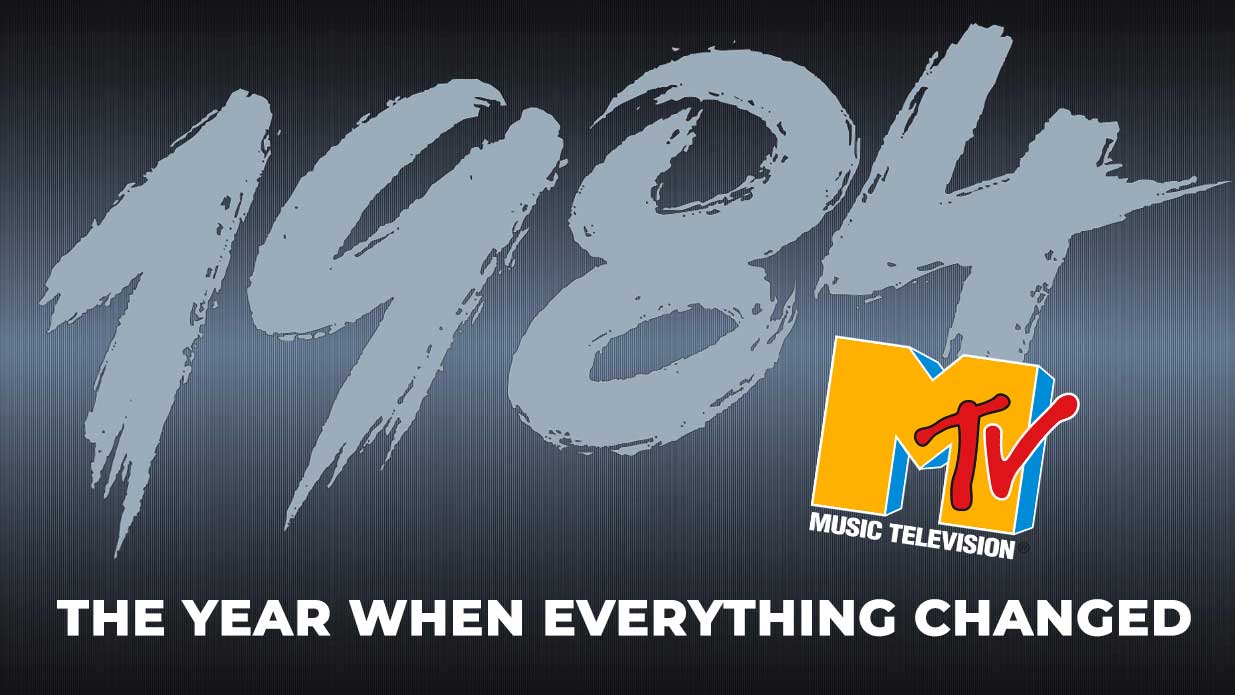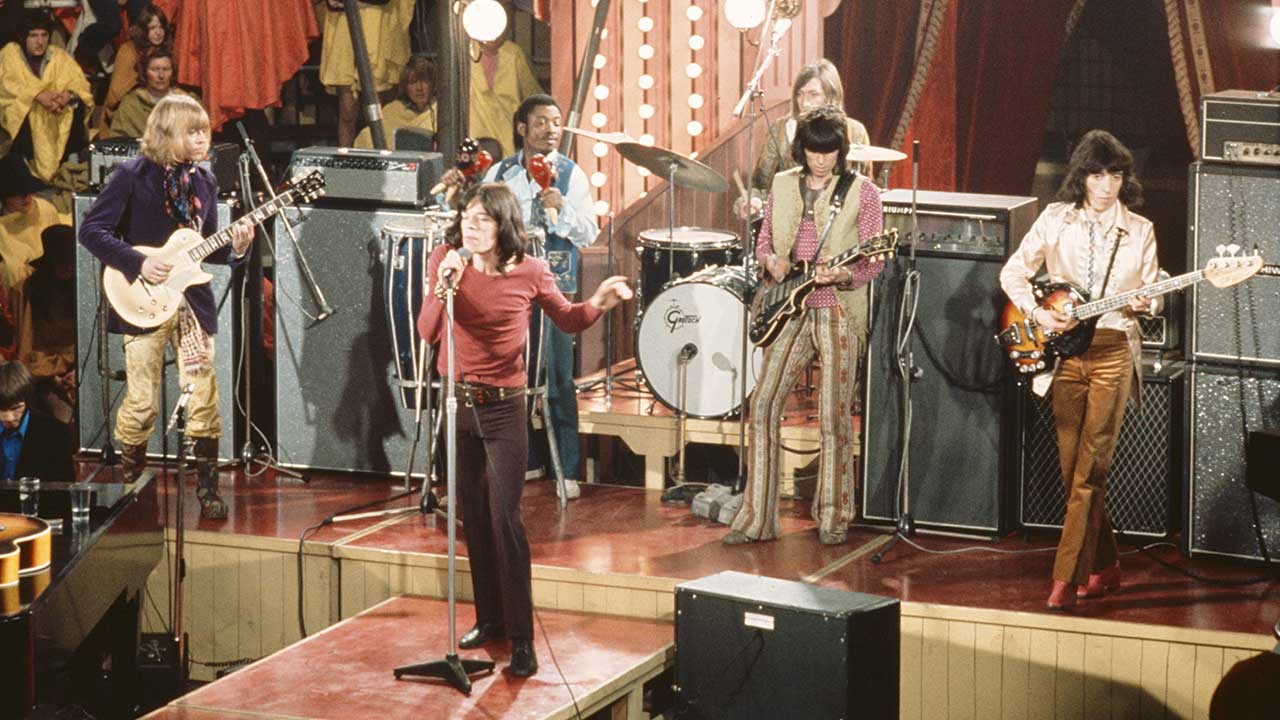"MTV was the first time that technology became a rock star": The story of 1984, the year everything changed
Sitting between the heritage of the 70s and the glitzy, big-haired peak to which the 80s would ascend, 1984 was a quietly pivotal time for music, popular culture and the world as we knew it

Thirty-five years before it came to pass, George Orwell’s foretelling of 1984 was as a dystopian horror story; Big Brother, Newspeak, Room 101 and all that. In reality, the actual 1984 rolled around minus the all-powerful totalitarian Party of Orwell’s nightmares – although a couple of formidable and divisive leaders – Margaret Thatcher and Ronald Reagan – were both well into the process of bluntly reshaping Britain and the US respectively to fit their free-market, get-rich-quick dogma.
What Orwell could have set out as far back as 1949 was a prospectus for pop culture in 1984. He put the words into the mouth of one of his lead characters, O’Brien, the scheming Party official. “Our only true life is in the future,” O’Brien tells the doomed Winston in Nineteen Eighty-Four. “But how far away that future may be there is no knowing.”
What is apparent from the distance of another 40 years is the springing up of the first shoots of the inter-connected, tech-dominated, globalised world we all now inhabit. Not that anyone was too troubled by the prospect of this Orwellian future at the time.
Indeed, among the most feverishly covered news stories at the dawning of 1984 was the banning of a pop record by Radio 1 (Frankie Goes to Hollywood’s propulsive ode to masturbation, Relax – which promptly vaulted to No.1), and Elton John’s surprise wedding to his studio engineer Renate Blauel (somewhat less unexpectedly, the couple were divorced within four years).

Were one to have conducted a survey of the musical landscape in 1984, it would have appeared reassuringly fecund and fertile. Big and booming. Pleasingly pocked as well, with a variety of shifting scenes and movements. Landing somewhere between the grit of the 70s and the spandex-heavy feel of the latter 80s, rock bands reached turning points.
Erupting out of the US were thrash-metal, hair-metal, hardcore and alt.rock, and with bands as diametric as Metallica, R.E.M., Ratt, and Black Flag ascendent. In the UK, Duran Duran, Spandau Ballet, Culture Club and Thompson Twins were at the vanguard of the New Romantics. Then again, there were their polar opposites – The Smiths debuting, and the protagonists of the so-called ‘big music’, led by U2 and with them Simple Minds, Big Country and The Alarm.
Yet towering over all else like Himalayan peaks were four artists in the process of redefining the notion of superstardom and towards it being a state of global ubiquity: Michael Jackson, Prince, Madonna and Bruce Springsteen. Even in spite of it coming out in late November ’82, Jackson’s Thriller turned out to be the best-selling album of 1984. Collectively, it and Prince’s Purple Rain, Madonna’s Like A Virgin and Springsteen’s Born In The USA, all 1984 releases, went on to amass worldwide sales of more than 146 million and counting.
Sign up below to get the latest from Classic Rock, plus exclusive special offers, direct to your inbox!
Music scenes and tribes have since dissipated, or else vanished altogether, the earth bulldozed around them by the superstar juggernauts spawned by this original Big Four. For Jackson, Prince, Madonna and Springsteen, then, read, say, Taylor Swift, Beyonce, Drake and Harry Styles now.
Essentially, the superstar Class of ’84 were pop’s first brand builders, their image, be it mores-baiting provocateur or working-class hero, entirely synonymous with their music. To this end they were indebted to another dominant factor in music in 1984 – MTV. Three years into its lifespan, MTV had progressed apace from upstart cable TV station to becoming the single most powerful and affecting agent of change for the music business.
The pop video, initially dismissed by artists and their record companies as a pointless affectation, was now an all-important record-selling and career-making tool. Promo video concepts would grow ever more outlandish, with increasingly lavish sums thrown at them. MTV’s influence was already extending out across pop culture.
Accelerating a trend begun with Flashdance in 1983, no less than four of the biggest hit films of 1984 – Ghostbusters, Beverly Hills Cop, The Karate Kid and Footloose – were shot like nothing so much as an extended pop video. Which is to say they regaled in slick, glossy visuals and fast edits. They each also had soundtracks of booming pop-rock. That September, the same was true of the piloting TV series Miami Vice, its subsequent success establishing a template carrying on through everything from Breaking Bad to Yellowjackets, albeit in more refined form.
In I Want My MTV, their 2012 history of the station, authors Rob Tannenbaum and Craig Marks posited how “MTV was the first time that technology became a rock star”. There was a second, and third example of this rising development in 1984. In September, North America’s first compact disc manufacturing plant opened up in Terre Haute, Indiana to press copies of Springsteen’s Born In The USA in this new recording format.
By the following year the CD would be fast-tracking towards obliterating vinyl and cassette as the primary means of music delivery. The CD promised to make the act of listening to music so much more userfriendly – better-sounding, durable, easier to access. If that meant all but doing away with artful packaging, then so be it.
As it happened, of course, the CD didn’t turn out to be eternally playable or either skip or scratch resistant. Nevertheless, the brute starkness of its functionality-over-artfulness equation undoubtedly paved the way for iTunes, Spotify and the streaming revolution that followed.
Also by 1984, the Yamaha DX7 was establishing itself as the first commercially successful digital synthesiser to go on sale to the general public, and at a price not requiring a bank hold-up to afford one. After the DX7, the synth market blew up through the rest of the decade. With it came a commensurate deluge in music sampling and digital recording, and altogether a notional sense of the acts of recording and releasing music being self-empowered.
From 1984, the music business boom period stretched well into the next decade. It was, though, the last of its kind, and its success was founded upon the huge sales of physical product. Altogether, there was a glut of multimillion-selling records released in ’84. Among them were Van Halen’s 1984, Bryan Adams’s Reckless, Synchronicity by The Police, Heartbeat City by The Cars, and U2’s The Unforgettable Fire, alongside Culture Club (Colour By Numbers), Duran Duran (Seven The Ragged Tiger) and many more.
Hard rock continued to adapt and thrive within its own self-contained universe. ZZ Top hit MTV-driven pay dirt with Eliminator, Twisted Sister with Stay Hungry. The established guard in general remained strong. There were rock-solid albums from Judas Priest (Defenders Of The Faith), Whitesnake (Slide it In), Dio (The Last in Line), Rush (Grace Under Pressure), and the Scorpions (Love At First Sting).
Foreigner’s I Want to Know What Love Is, REO Speedwagon’s I Can’t Fight This Feeling and John Waite’s Missing You all topped the US Hot 100 singles chart. Iron Maiden became the first rock band to venture behind the Iron Curtain on their World Slavery Tour. The classic line-ups of both Deep Purple and Aerosmith reunited.
Within this bubble there was always something new and different brewing. There were debut albums from Ratt, Anthrax, the Red Hot Chili Peppers and Black Flag. Both Metallica (with Ride The Lightning) and Marillion (Fugazi) got into their stride with their second ones. Outside of it, the first MTV Video Music Awards were held at New York’s Radio City Music Hall on September 14. Dan Ackroyd and Bette Midler hosted, Herbie Hancock took home five awards. There was some way to go before the grunge and hip-hop hordes stormed the old order barricade.
As well as all this there were the ups and downs, the triumphs and tragedies of any other year. The Police played their last show together for 23 years in Melbourne, Australia on March 4. Van Halen played their last show with David Lee Roth for 27 years in Nuremberg, West Germany on September 2.
Styx, Kansas and Jefferson Starship all disbanded, each of them bound to return. So too did a never-were LA band, Hollywood Rose, freeing their frontman and guitarist, Axl Rose and Izzy Stradlin, to move on to Guns N’ Roses. Getting together were Soundgarden, Sepultura, Screaming Trees, Primus, Warrant and Living Colour. Music bid farewell to Count Basie and Jackie Wilson. To Marvin Gaye as well, shot dead at 44 by his own father on April 1.
Two car crashes that December, both involving drummers, led to very different outcomes. On December 8, Hanoi Rocks drummer Razzle died in a car being driven by Mötley Crüe singer Vince Neil. Both men had been drinking all day. Neil’s 1972 Ford Pantera spun on a patch of wet Hollywood road and ploughed headlong into an oncoming car. Neil escaped with minor injuries. Razzle died instantly. At the time, Hanoi Rocks were undertaking their first US tour in support of their heralded new album Two Steps From The Move, the world at their feet. They limped on for a while after Razzle’s passing, but broken and without heart – their moment stolen from them.
On New Year’s Eve 1984, Rick Allen, 21-year-old drummer with Def Leppard, was driving his Corvette C4 on a rural stretch of the A57, a few miles from his home city of Sheffield. His girlfriend, Miriam Barendsen, was in the passenger seat. A car in front of them began to slow down and then accelerate, taunting Allen. Eventually Allen accelerated to overtake, but lost control of the Corvette, hitting a drystone wall and overturning into a field. Flung from the car, Allen’s left arm was severed at the shoulder by his seat belt.
Eighteen months later, Allen returned to the stage with Def Leppard, sitting behind an electronic drum kit custom-made to allow him to play his left-hand drum parts with his feet. The album the band were working on, Hysteria, was released on August 3, 1987 and went on to sell more than 20 million copies. Such are the cruel vagaries of fate.
Twenty million sales is an amount beyond the wildest imagining of a rock band, or most anyone else, in the digital world 1984 telegraphed and begot. Forty years on, 1984 seems to exist in both sepia tint and Technicolor; at once the world as it used to be, and then again as a staging post on the way to the radical changing points of the future.
Much of its music has aged well. The best of the records from it remain indelible, hardly dated. Less so some of its more garish fashion statements – shoulder pads, leg warmers, the mullet (although even that has had a resurgence of late). Strikingly, so many of the acts that broke through during the period are prospering still, as if having to navigate the tumult of the 80s was strengthening and emboldening.
See, for example, Springsteen, U2, Madonna or Metallica. See also the dominant corporate behemoths of today. So many of them grown up through, or else informed and shaped by, precedents and attitudes dating back to the so-called ‘me’ decade. As Orwell, once again, wrote it in Nineteen Eighty-Four: “Who controls the past controls the future.”
Paul Rees been a professional writer and journalist for more than 20 years. He was Editor-in-Chief of the music magazines Q and Kerrang! for a total of 13 years and during that period interviewed everyone from Sir Paul McCartney, Madonna and Bruce Springsteen to Noel Gallagher, Adele and Take That. His work has also been published in the Sunday Times, the Telegraph, the Independent, the Evening Standard, the Sunday Express, Classic Rock, Outdoor Fitness, When Saturday Comes and a range of international periodicals.

